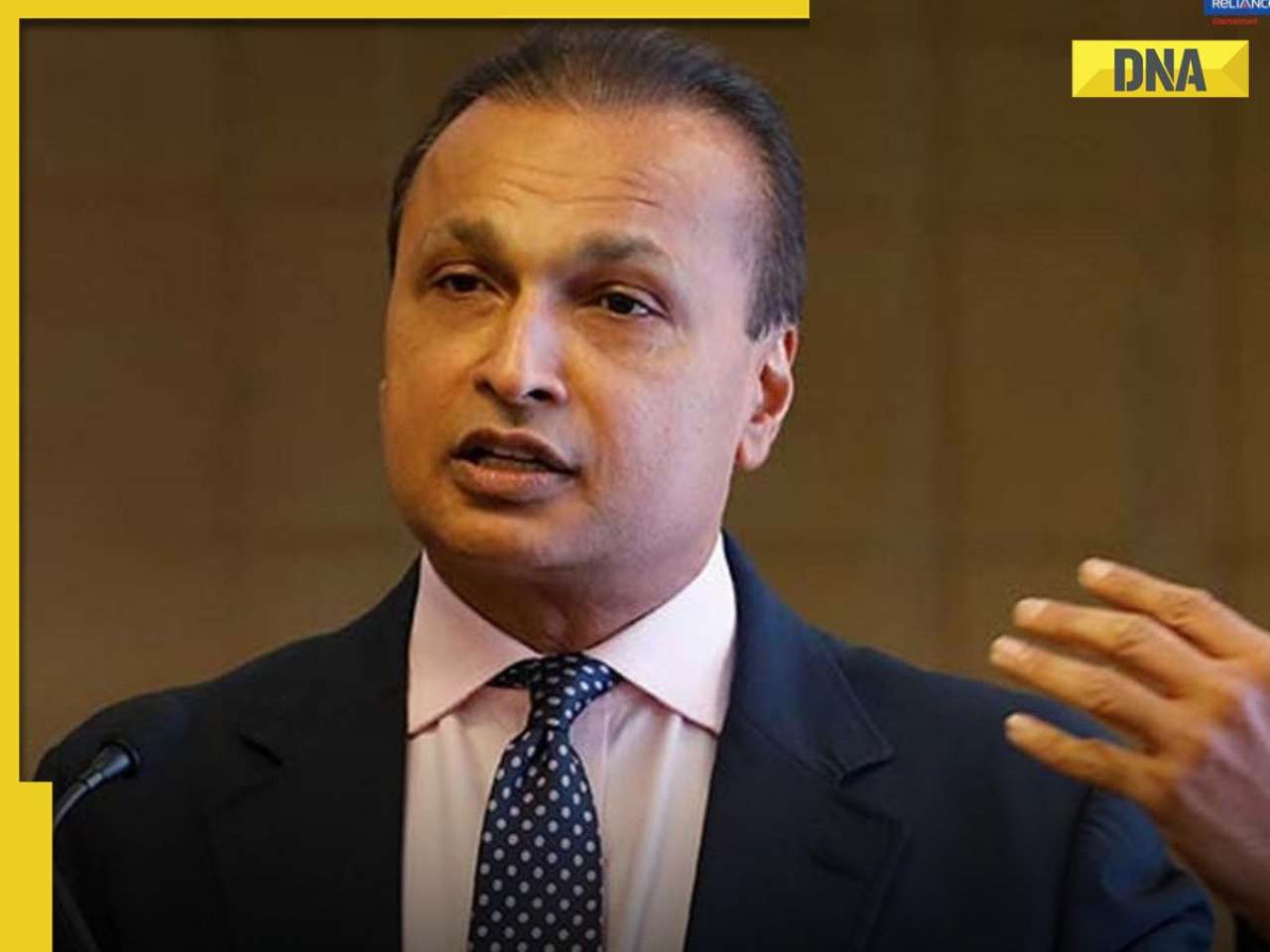As I write this piece, the US dollar has tumbled to historical lows versus the euro and GBP at 1.4368 and 2.0500, respectively and against the Candian dollar.
Weak dollar, firm crude prices, subprime crisis and liquidity are as much India’s risks, as those of the US
Devendra Nevgi
CEO & CIO, Quantum Asset Management Co Pvt Ltd
As I write this piece, the US dollar has tumbled to historical lows versus the euro and GBP at 1.4368 and 2.0500, respectively, and even against the Canadian dollar, which has moved above par at around 0.9625.
The fallout of the housing and credit crisis is seen adversely impacting the US economy, leading to expectations of lower interest rates pushing the dollar to new lows.
IMF chief Rato said this week, “Risks of a steep, disorderly steep fall in the US dollar have grown, although it is not the most likely economic scenario.”
And what is the US dollar’s weakening doing across the world? It’s making everything that’s denominated or traded in US dollar cheaper for investors who don’t draw their balance sheets in the currency.
The crude oil rallied above $92.22 per barrel, again an all-time high, as Iraq-Turkey conflicts continued, US imposed more sanctions on Iran and Nigerian crude supplies continued to be disruptive.
Crude oil is now close to its inflation-adjusted high of $101.70 reached during the Iran-Iraq war in 1980. Crude oil is now up by 50% in 2007.
With crude and food prices globally going northwards, pushing consumer price inflation higher, gold prices (an inflation hedge) scaled a 28-year high of $780 per ounce.
It’s inching closer to its all-time high of $850. Platinum is flirting with its historical peak. Sliver climbed to its eight month high of $14.15 per ounce.
Asian currencies and stocks are conquering new historical peaks. And the central banks are struggling to invent new ways to achieve the “impossible trinity,” viz. an open capital account, independent monetary policy and a pegged exchange rate.
Cross-border capital flows continue to reach enormous sizes and distort the asset prices as well as monetary/exchange rate policies, especially in emerging markets.
Policy makers are devising newer methods to moderate the capital flows to avoid financial instability.
Money Supply (M3), a broad measure of liquidity globally, is way ahead of the nominal GDP growth rate. The European Central Bank (ECB) said the September M3 is at a 28-year high.
US Central bank has already stopped the disclosure of its M3 figures.
The US subprime crisis is getting murkier day by day. More and more skeletons are falling out of the cupboard.
Investment banks and intermediaries, which act as the lubricants of the US economy, are reporting massive losses in the housing and subprime sectors.
Financial engineering and innovation has taken more than what it gave. Large investment and other banks reported billions of dollars in subprime-related losses.
The biggest names in US with the best of risk management practices roiled in the crisis — Countrywide Financial, Merrill Lynch, Bank of America and Citibank, to name but a few.
Financial globalisation has ensured that the contagion effect was also felt in countries such as the UK & Germany.
Bank of England back-tracked on its stance of not rescuing careless lenders and was forced to provide the safety net to Northern Rock, a mortgage lender in trouble.
The bigger US banks have now mooted a $75 billion Super Fund to take over the assets of troubled and reckless investors.
US Senator Charles E Schumer, chairman of the Joint Economic Committee (JEC), summarised it very well in its report released on October 25, “State by state, the economic costs from the subprime debacle are shockingly high.
From New York to California, we are headed for billions in lost wealth, property values, and tax revenues. The current tidal wave of foreclosures will soon turn into a tsunami of losses and debt for families and communities.
The administration must act quickly to save financially-strapped families from drowning in this flood of subprime foreclosures.”
The US central Bank, Federal Reserve is doing what it has done is in the past whenever a crisis has endangered the economic growth and financial stability, viz.
“Infuse liquidity by cutting rates,” the panacea for all its problems and would continue to do so when the Fed meets again on October 31 and November 1.
The world over, central banks have pumped in billions of dollars and euros to rescue the troubled banks.
The spillover effect of the excess liquidity is felt across global asset prices, including Indian stock markets. Emerging economies with good growth potential and especially with semi-pegged currencies, were recipients to huge capital flows.
Year to date and the month to date flows in Indian markets have been $17.4 billion and $4.16 billion, respectively, taking the markets beyond 19,000 levels on the Sensex.
It’s pushed the Indian regulator Sebi to clamp down on investments through participatory notes.
Chinese markets were quoted at a PE ratio of 52 and refused to buckle under the pressure of a series of rate hikes by the Chinese central bank.
Will the US dollar continue to sink? What will be the fallout of the subprime crisis on US housing markets and the economy? Will it push US into recession? Will crude cross $100$ per barrel and add fuel to the fire?
Somehow, only the US treasury markets are factoring such risks and the stock markets continue to overlook it.
There seems to be a lot of certainty to the uncertainty.
The rising global financial integration of Indian economy has exposed India to the risk, though relatively lower, to a disorderly unwinding of the imbalances centred on the US.
A study by the International Monetary Fund earlier this year had proclaimed that with every 1 percentage point drop in the US growth rate, India’s economy would falter by 0.1-0.2 percentage points.
And who would not agree with the damage a $100 crude oil price would do to the Indian economy?
Devendra@QuantumAmc.com
![submenu-img]() This singer left Air Force, sang at churches, became superstar; later his father killed him after...
This singer left Air Force, sang at churches, became superstar; later his father killed him after...![submenu-img]() Indian-origin man says Apple CEO Tim Cook pushed him...
Indian-origin man says Apple CEO Tim Cook pushed him...![submenu-img]() Anil Ambani’s Rs 96500000000 Reliance deal still waiting for green signal? IRDAI nod awaited as deadline nears
Anil Ambani’s Rs 96500000000 Reliance deal still waiting for green signal? IRDAI nod awaited as deadline nears![submenu-img]() Most popular Indian song ever on Spotify has 50 crore streams; it's not Besharam Rang, Pehle Bhi Main, Oo Antava, Naina
Most popular Indian song ever on Spotify has 50 crore streams; it's not Besharam Rang, Pehle Bhi Main, Oo Antava, Naina![submenu-img]() Did Diljit Dosanjh cut his hair for Amar Singh Chamkila? Imtiaz Ali reveals ‘he managed to…’
Did Diljit Dosanjh cut his hair for Amar Singh Chamkila? Imtiaz Ali reveals ‘he managed to…’ ![submenu-img]() DNA Verified: Is CAA an anti-Muslim law? Centre terms news report as 'misleading'
DNA Verified: Is CAA an anti-Muslim law? Centre terms news report as 'misleading'![submenu-img]() DNA Verified: Lok Sabha Elections 2024 to be held on April 19? Know truth behind viral message
DNA Verified: Lok Sabha Elections 2024 to be held on April 19? Know truth behind viral message![submenu-img]() DNA Verified: Modi govt giving students free laptops under 'One Student One Laptop' scheme? Know truth here
DNA Verified: Modi govt giving students free laptops under 'One Student One Laptop' scheme? Know truth here![submenu-img]() DNA Verified: Shah Rukh Khan denies reports of his role in release of India's naval officers from Qatar
DNA Verified: Shah Rukh Khan denies reports of his role in release of India's naval officers from Qatar![submenu-img]() DNA Verified: Is govt providing Rs 1.6 lakh benefit to girls under PM Ladli Laxmi Yojana? Know truth
DNA Verified: Is govt providing Rs 1.6 lakh benefit to girls under PM Ladli Laxmi Yojana? Know truth![submenu-img]() Alia Bhatt wears elegant saree made by 163 people over 1965 hours to Met Gala 2024, fans call her ‘princess Jasmine’
Alia Bhatt wears elegant saree made by 163 people over 1965 hours to Met Gala 2024, fans call her ‘princess Jasmine’![submenu-img]() Jr NTR-Lakshmi Pranathi's 13th wedding anniversary: Here's how strangers became soulmates
Jr NTR-Lakshmi Pranathi's 13th wedding anniversary: Here's how strangers became soulmates![submenu-img]() Streaming This Week: Heeramandi, Shaitaan, Manjummel Boys, latest OTT releases to binge-watch
Streaming This Week: Heeramandi, Shaitaan, Manjummel Boys, latest OTT releases to binge-watch![submenu-img]() Remember Ayesha Kapur? Michelle from Black, here's how actress, nutrition coach, entrepreneur looks after 19 years
Remember Ayesha Kapur? Michelle from Black, here's how actress, nutrition coach, entrepreneur looks after 19 years![submenu-img]() Remember Heyy Babyy's cute 'Angel' Juanna Sanghvi? 20 year-old looks unrecognisable now, fans say 'her comeback will...'
Remember Heyy Babyy's cute 'Angel' Juanna Sanghvi? 20 year-old looks unrecognisable now, fans say 'her comeback will...'![submenu-img]() DNA Explainer: Why Harvey Weinstein's rape conviction was overturned, will beleaguered Hollywood mogul get out of jail?
DNA Explainer: Why Harvey Weinstein's rape conviction was overturned, will beleaguered Hollywood mogul get out of jail?![submenu-img]() What is inheritance tax?
What is inheritance tax?![submenu-img]() DNA Explainer: What is cloud seeding which is blamed for wreaking havoc in Dubai?
DNA Explainer: What is cloud seeding which is blamed for wreaking havoc in Dubai?![submenu-img]() DNA Explainer: What is Israel's Arrow-3 defence system used to intercept Iran's missile attack?
DNA Explainer: What is Israel's Arrow-3 defence system used to intercept Iran's missile attack?![submenu-img]() DNA Explainer: How Iranian projectiles failed to breach iron-clad Israeli air defence
DNA Explainer: How Iranian projectiles failed to breach iron-clad Israeli air defence![submenu-img]() This singer left Air Force, sang at churches, became superstar; later his father killed him after...
This singer left Air Force, sang at churches, became superstar; later his father killed him after...![submenu-img]() Most popular Indian song ever on Spotify has 50 crore streams; it's not Besharam Rang, Pehle Bhi Main, Oo Antava, Naina
Most popular Indian song ever on Spotify has 50 crore streams; it's not Besharam Rang, Pehle Bhi Main, Oo Antava, Naina![submenu-img]() Did Diljit Dosanjh cut his hair for Amar Singh Chamkila? Imtiaz Ali reveals ‘he managed to…’
Did Diljit Dosanjh cut his hair for Amar Singh Chamkila? Imtiaz Ali reveals ‘he managed to…’ ![submenu-img]() Watch: Arti Singh gets grand welcome at husband Dipak's house with fairy lights and fireworks, video goes viral
Watch: Arti Singh gets grand welcome at husband Dipak's house with fairy lights and fireworks, video goes viral![submenu-img]() Meet actress, who belongs to family of superstars, quit films after 19 flops, no single hit in 9 years; is still worth…
Meet actress, who belongs to family of superstars, quit films after 19 flops, no single hit in 9 years; is still worth…![submenu-img]() IPL 2024: Suryakumar Yadav's century power MI to 7-wicket win over SRH
IPL 2024: Suryakumar Yadav's century power MI to 7-wicket win over SRH![submenu-img]() DC vs RR, IPL 2024: Predicted playing XI, live streaming details, weather and pitch report
DC vs RR, IPL 2024: Predicted playing XI, live streaming details, weather and pitch report![submenu-img]() Watch: Team India’s new jersey for T20 World Cup 2024 unveiled
Watch: Team India’s new jersey for T20 World Cup 2024 unveiled![submenu-img]() DC vs RR IPL 2024 Dream11 prediction: Fantasy cricket tips for Delhi Capitals vs Rajasthan Royals
DC vs RR IPL 2024 Dream11 prediction: Fantasy cricket tips for Delhi Capitals vs Rajasthan Royals![submenu-img]() IPL 2024: Kolkata Knight Riders take top spot after 98 runs win over Lucknow Super Giants
IPL 2024: Kolkata Knight Riders take top spot after 98 runs win over Lucknow Super Giants![submenu-img]() Indian-origin man says Apple CEO Tim Cook pushed him...
Indian-origin man says Apple CEO Tim Cook pushed him...![submenu-img]() Meet man whose salary was only Rs 83 but his net worth grew by Rs 7010577000000 in 2023, he is Mukesh Ambani's...
Meet man whose salary was only Rs 83 but his net worth grew by Rs 7010577000000 in 2023, he is Mukesh Ambani's...![submenu-img]() Job applicant offers to pay Rs 40000 to Bengaluru startup founder, here's what happened next
Job applicant offers to pay Rs 40000 to Bengaluru startup founder, here's what happened next![submenu-img]() Viral video: Family fearlessly conducts puja with live black cobra, internet reacts
Viral video: Family fearlessly conducts puja with live black cobra, internet reacts![submenu-img]() Woman demands Rs 50 lakh after receiving chicken instead of paneer
Woman demands Rs 50 lakh after receiving chicken instead of paneer















































)
)
)
)
)
)